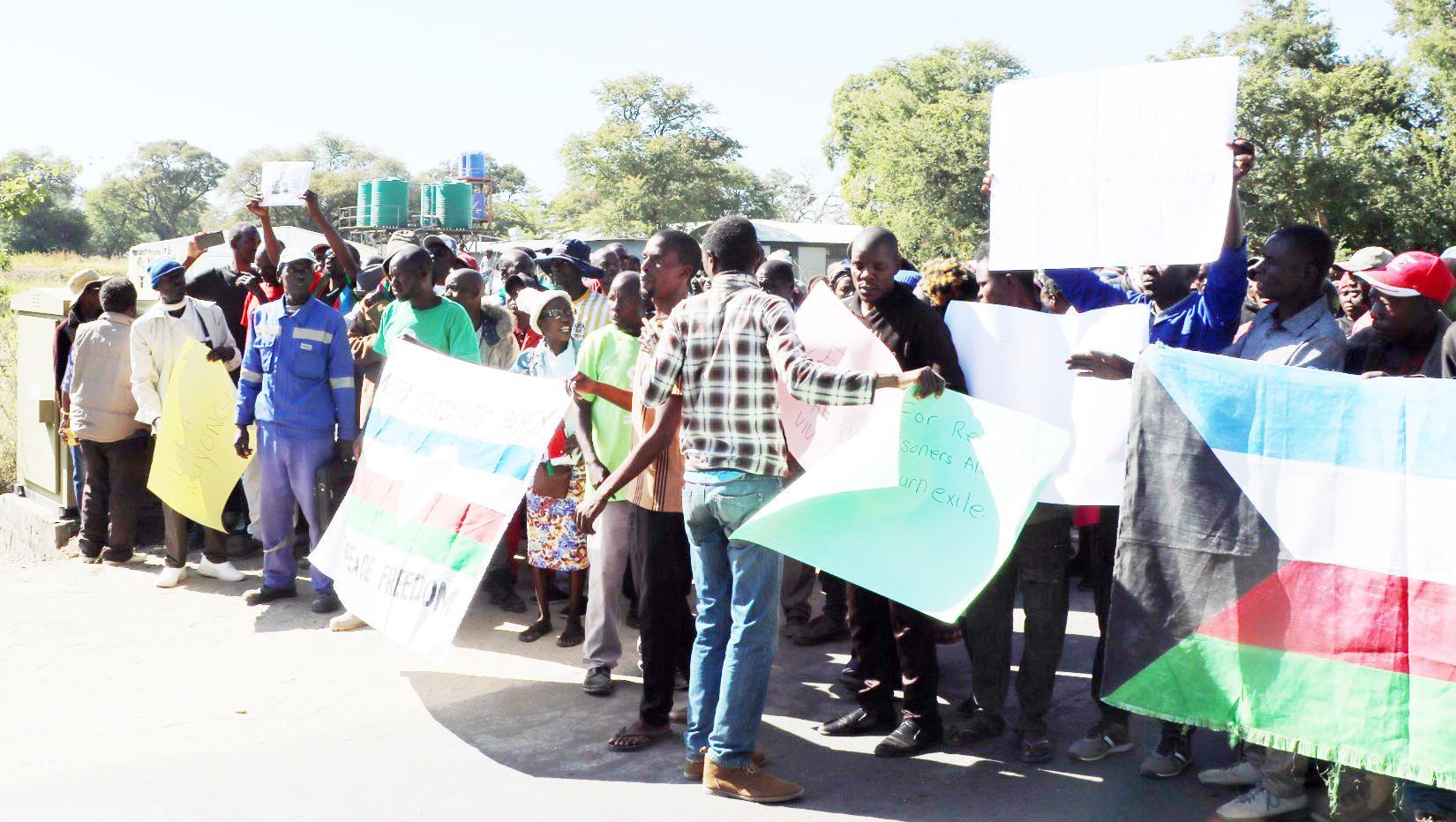Africa-Press – Namibia. After years of dormancy, calls for the independence of the former Caprivi region – present day Zambezi – resurfaced yesterday after the banned United Democratic Party (UDP) staged a demonstration in Katima Mulilo.
The UDP was defiant, demanding self-determination and the withdrawal of Namibian forces from the region.
The demonstration resurfaced tensions between Caprivian secessionist groups and the Namibian government, dating to the 90s. While the government maintains that region is an integral part of Namibia, the UDP continues to call for international intervention and recognition of what it claims is a suppressed right to independence.
Despite police orders to disperse from the Katima Mulilo Open Market, demonstrators stood their ground and proceeded to read the petition in public.
The petition, read by UDP Secretary Ronnicah Sipuho, was meant to be delivered to Zambezi governor Lawrence Sampofu, who was notably absent.
Addressed to the Namibian government, the petition outlines a string of grievances, including alleged human rights abuses, political repression and historical injustices suffered by the people of Caprivi.
“The United Democratic Party, UDP, hereby lays this petition to the Namibian government concerning matters within the Caprivi Strip. Caprivi needs self-determination when exercising their political rights.
They are being tortured, killed, detained and intimidated by the Namibian government,” Sipuho said.
Sipuho further cited instances of alleged mass graves, secret executions and enforced disappearances of Caprivians, accusing the government of repeated human rights violations.
“If Caprivi is part of Namibia, why did they apply the law to the Eastern Caprivi Strip, Act 10 of 1999? And to whom did they consult?” she asked. She went on, “We are appealing to the Namibian President, Her Excellency Netumbo Nandi- Ndaitwah, to command the Namibian army to vacate Caprivi territory as soon as possible.”
The UDP also demanded the unconditional release of Caprivian political prisoners, return of exiles and the implementation of what they term “5 November 1964 agreement.”
Amid the demonstration, UDP Elders Council member Alfred Kapokola was briefly detained by police along with Sipuho and another member but were later released without charge.
“We’re staying. Nothing happened to us at the police station. We are protesting. The police have been withdrawn. We can do whatever we want to do, but the important thing is we should not damage or harm people. We can continue doing our things,” Kapokola told reporters after his release.
Deputy Commissioner of Operations in Zambezi, Joseph Nehemia, later confirmed that the demonstrators were released with a warning to avoid any political violence.
The conflict in Caprivi in the 90s involved an armed conflict between the Caprivi Liberation Army (CLA), a rebel group aiming for the secession of the Caprivi Strip from Namibia, led by Mishake Muyongo, and the Namibian government.
The launch of the secessionist campaign occurred on 2 August 1999, when the CLA launched an attack in Katima Mulilo, occupying the State-run radio station and attacking a police station, the Wanella border post and an army base.
Namibian armed forces quashed the secessionist attempt within days.
Muyongo was a member of the National Assembly from 1990 to 1999. In the 1994 presidential election, he was placed second, behind Founding President Sam Nujoma, with 23.08% of the vote.
After Muyongo expressed support for the Caprivi secessionist movement, he was suspended from the DTA in August 1998 at an extraordinary meeting of the party’s executive committee.
Muyongo later fled the country with chief Boniface Mamili of the Mafwe.
Other alleged secessionists, including the former governor of the then Caprivi region (today Zambezi) John Mabuku fled to Botswana around the same time.
Muyongo was replaced as DTA president by the late Katuutire Kaura, who called for Muyongo to be brought back and put on trial. Muyongo escaped the harrowing Caprivi treason trial in Namibia and remains in exile in Denmark.
For More News And Analysis About Namibia Follow Africa-Press






